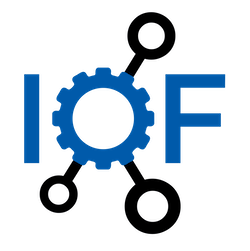Vehicle Signal Specification ontology
VSSo derives from the automotive standard VSS, and follows the SSNpattern for representing observations and actuations. VSSo defines car components, sensors, signals, etc.

VSSo derives from the automotive standard VSS, and follows the SSNpattern for representing observations and actuations. VSSo defines car components, sensors, signals, etc.

ISO 10303 provides a representation of product information along with the necessary mechanisms and definitions to enable product data to be exchanged. The exchange is among different computer systems and environments associated with the complete product lifecycle, including product design, manufacture, use, maintenance, and final disposition of the product. This document defines the basic principles of product information representation and exchange used in ISO 10303. It specifies the characteristics of the various series of parts of ISO 10303 and the relationships among them.

Defines a formal logic based concept specialisation approach to support the development of manufacturing reference models that can underpin the necessary business specific knowledge models that are needed to support the configuration of global production networks.

ISO/IEC 15944-4:2015 provides a set of UML class diagrams and conceptual explanations that circumscribe the Open-edi Business Transaction Ontology (OeBTO). It explains the mechanics of a business transaction state machine, the procedural component of an OeBTO, and the (internal) constraint component of OeBTO, its repository for business rules. ISO/IEC 15944-4:2015 addresses collaborations among independent trading partners as defined in ISO/IEC 159441. ISO/IEC 15944-4:2015 applies to both binary collaborations (buyer and seller) and mediated collaborations (buyer, seller, third-party). The ontological features described herein propose standards only for the Business Operational View (BOV), that is, the business aspects of business transactions as they are defined in ISO/IEC 159441.

The IOF-s mission is to create a suite of ontologies intended to support digital manufacturing by facilitating cross-system integration both within the factory and across an enterprise, in commerce between suppliers, manufacturers, customers and other trading partners, and throughout the various stages of the product life cycle. The IOF Core Ontology resides at the top of this suite from an architectural perspective and contains terms found in a number of operational areas of manufacturing. These common terms appear, or are anticipated to appear, in two or more of the ontologies of the suite. Additionally, as the architectural approach chosen by the IOF is to base all of its ontologies on a single foundational or top-level ontology - for which the IOF chose the Basic Formal Ontology or BFO - the Core Ontology contains a number of intermediate-level terms that derive from BFO and from which common industry terms are in turn derived. Such intermediate-level terms are most often domain independent - meaning they are found in other industries and domains, such as in the banking, insurance, and healthcare industries, or in the sciences, as in the physics, chemistry and biology domains. The IOF Core Ontology is developed and formalized as an ontology using both first-order logic and version 2 of the Web Ontology Language (OWL). The use of logic ensures that each term is defined in a way that is unambiguous to humans and can be processed by computers. All terms appearing in the ontology are reviewed and curated by a working group and consensus is reached by validating usage in the context of manufacturing domain use cases.

the main categories of cutting tool data and the relationships between them. It provides a general information model of data representation and information exchange for these categories, as well as an overview of the principles of product data exchange used in ISO 13399 as a whole, a description of the other parts of ISO 13399 and a method for transferring cutting tool data

The objective of the paper is to show how the OAM can be used to realize seamless integration of product information, with an emphasis on assembly, throughout all phases of a product design

semantic approach which is able to adapt the workplace in real time to the production context and operators' characteristics

reference ontology for industrial maintenance using a top-down ontology engineering approach

Ontology to enhance engineering of PSS in manufacturing, by modelling all the aspects that affect, or could affect a PSS

The Building ontology has been developed to perform as the core module of the BIMERR Ontology Network, containing information related to building topology, and components. The model is constructed as an extention of the BOT ontology that provides the vocabulary to describe the topology of a building as well as the relationships between their main components such as zones, spaces, and building elements. The taxonomy of building components is based on the proposed by the IFC 4.1 standard.

The Material Properties Ontology aims to provide the vocabulary to describe the building components, materials, and their corresponding properties, relevant within the construction industry.
